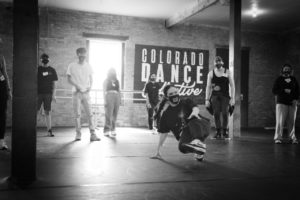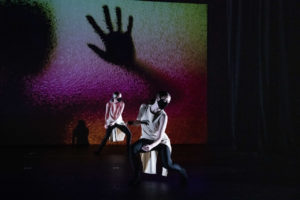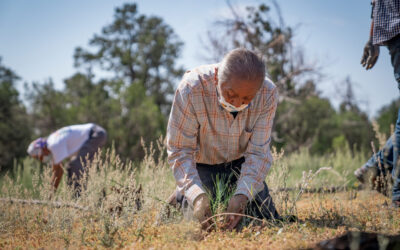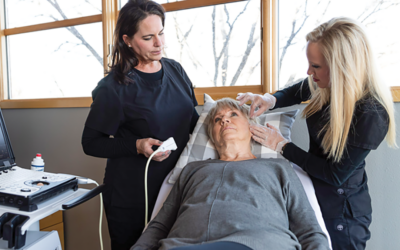There was a time when the idea of virtual rehearsals and masked performances would have seemed completely absurd to anyone in the dance community. Now, with almost two years of canceled, postponed and modified productions under their belt, studios across Northern Colorado have redefined what it means to move together through time and space. For many, that has meant leaning on other mediums like film and streaming, and for others, the focus has shifted toward more community outreach.

Alicia Viezcas, center, assistant hip hop director at Colorado Dance Collective, teaching students at The Greeley Warehouse.
Judy Bejarano, senior dance instructor at CSU and founder of contemporary dance company IMPACT in Fort Collins, says the cross-pollination within the local dance community has allowed them to think on their feet. Some teachers work at multiple schools and studios, and many independent artists collaborate with one another on different projects, so when things shut down in spring of 2020, they put their heads together and found new ways to perform.
“IMPACT either had onsite outdoor rehearsals or virtual indoor rehearsals over Zoom during that first part of the pandemic, and we started experimenting with other mediums, like dance for film,” Bejarano says. “Over the course of 2020 we created five dance for camera films that we got to share with the community, which was a really fun way to bridge the gap when we couldn’t perform in person.”
Other studios experimented with dance for film and put on virtual performances, too. The Colorado Dance Collective, a nonprofit adult dance organization in Greeley, switched to virtual rehearsals and created several dance films, one being a collage-style video with members dancing to the same song in their homes. They also put on a virtual Christmas performance and shared it via Facebook Live for audiences at home.
Colorado Dance Collective founder Wendy Sosa says it was important to keep dancing even with restrictions in place: “The collective is a very safe and loving atmosphere for any adult dancer to join and know that they are accepted. We did our best to continue providing that space even when we were forced apart, even if that meant dancing together over Zoom rather than face-to-face.”
Then came summer of 2021, and with restrictions temporarily lifted and warm weather allowing for outdoor shows, dancers jumped at the chance to perform for real audiences once again. They rehearsed together, maskless, but they didn’t abandon the virtual tools and relationships added to their repertoire. Dance for film was here to stay.
More collaborative multimedia projects began to emerge, such as the Roundabout Progressive Art, Film & Music Series. IMPACT participated in the event last August, which brought local dancers, musicians and artists together to put on filmed performances at The Mishawaka, The Lyric Cinema and the Holiday Twin Drive-In Theatre. Events like Roundabout allowed creatives to break away from Zoom and showcase their talent in a new way all while supporting local nonprofits.
Dancers found other ways to give back to the community, too. Bejarano runs an outreach program through IMPACT called Every Voice Matters, where dancers put on workshops at local schools and engage students in movement. “Even during the worst parts of the pandemic, our dancers were still able to present the material virtually to students in their homes, providing a creative outlet for them when at-home learning took place,” she says.

Mikayla Zavattaro and Soph Cardinal performing “Humanesque” at the CSU Spring Dance Concert, 2021. Photo courtesy of Jennifer Clary.
Meanwhile, Sosa was in the process of starting The Wardrobe, a collection of gently used dance attire and costumes available to young dancers at little to no cost. Like Bejarano, her passion for inspiring people of all ages to dance was only strengthened during the pandemic, so she began pouring her energy into the idea while the studio was closed. Now, her directors are turning their attention to what could hopefully be a more normal season.
The Colorado Dance Collective puts on workshops as part of their outreach in the spring—something that has taken a hiatus since the start of the pandemic. Armando Silva, hip hop company director at the Colorado Dance Collective (and muralist mentioned on pg. 34), says the nonprofit’s free Hip Hop Madness event typically attracts over a hundred dancers to learn from some of the region’s top hip hop instructors.
“The hip hop umbrella is where we can make the most impact in our community because it’s one of the main dance genres that doesn’t require you to have ballet shoes or any other specific attire,” he says. “My hope for this season is that we can get back to providing workshops and doing more outreach where people can just show up as they are and express themselves through in-person dance.”







